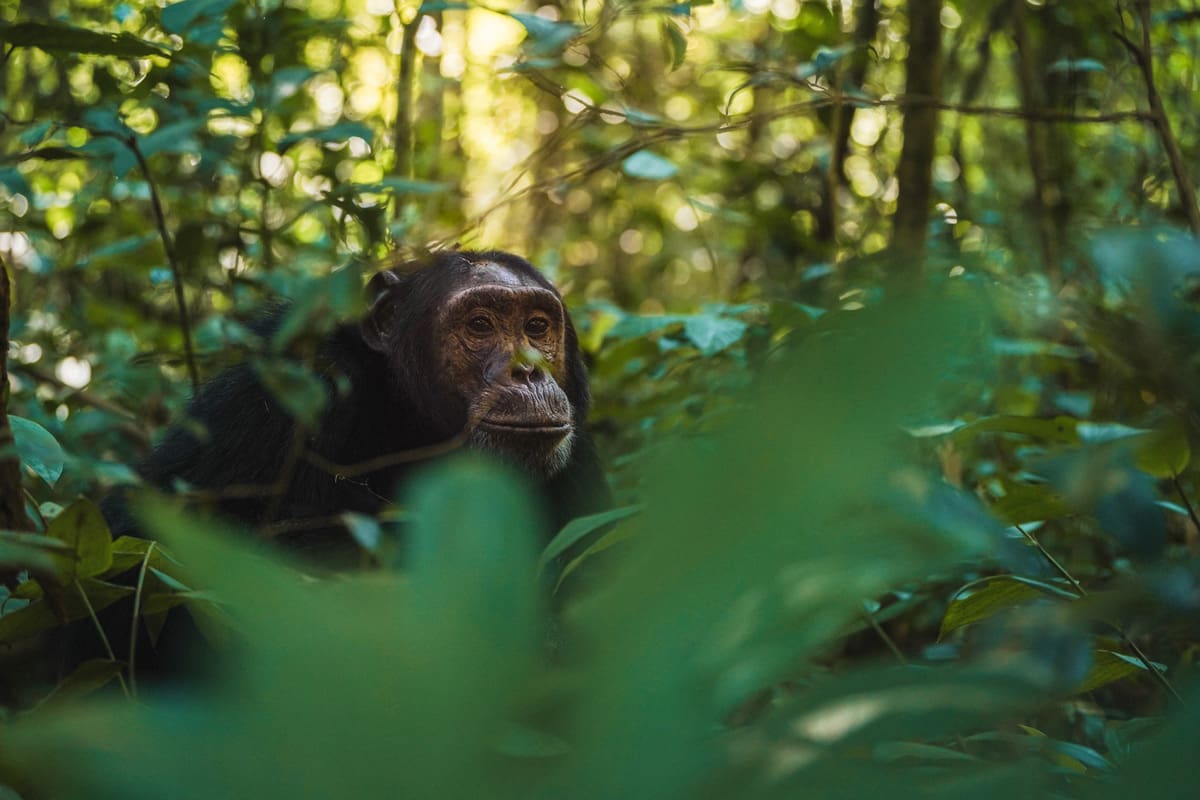
Kibale National Park
Renowned for its diverse primate population, including the largest number of chimpanzees in Uganda

Renowned for its diverse primate population, including the largest number of chimpanzees in Uganda
Kibale National Park, located in western Uganda, is a premier destination for primate enthusiasts and nature lovers. Often referred to as the "Primate Capital of the World," it boasts the highest density of primates in Africa, including over 1,500 chimpanzees.
Spanning 795 square kilometers, the park features a mix of evergreen and deciduous forests, with elevations ranging from 1,100 to 1,590 meters. Its lush environment supports 13 primate species, 375 bird species, and a variety of mammals, making it a biodiversity hotspot.
Kibale is also a critical conservation area, protecting one of Uganda's largest populations of endangered chimpanzees and serving as a vital ecological corridor connecting to Queen Elizabeth National Park.
Kibale National Park is celebrated for its remarkable primate diversity, hosting 13 species, including chimpanzees, red colobus monkeys, and L'Hoest’s monkeys. Its dense forests and swampy areas create an ideal habitat for these animals, alongside 375 bird species and 70 mammal species.
The park is home to approximately 1,500 chimpanzees, with several communities habituated for tourism and research. Visitors can experience the thrill of chimpanzee tracking, observing these intelligent creatures in their natural environment.
Chimpanzee tracking is the centerpiece of a visit to Kibale. The adventure starts with a morning briefing at the park’s headquarters, followed by a trek in small groups of up to 6 people, led by expert guides and trackers.
Treks typically last 2 to 5 hours, depending on the chimpanzees’ location. Once located, visitors spend one hour observing their behaviors—feeding, grooming, and socializing—offering an intimate glimpse into their lives.
Kibale has several areas for chimpanzee tracking and other activities, each with distinct features:
Main hub for chimpanzee tracking, with well-developed trails
Quieter area in the north, ideal for birding and nature walks
Nearby swamp sanctuary, great for birding and monkey sightings
Remote area with the largest chimpanzee community, mainly for researchers
376 km (233 mi)
776 sq km (299 sq mi)
1,100 to 1,590 meters (3,609 to 5,216 ft)
1993 (National Park status)
Not designated, but globally recognized for biodiversity
~1,500 individuals
375 bird species
13 primate species
70 mammal species
$250 per person (Foreign Non-Residents)
$150 (Foreign Residents)
UGX 180,000 (East African Residents)
Explore swamps for birds, monkeys, and unique flora
Visit local villages to learn about cultural traditions
Spot 375+ bird species, including the rare green-breasted pitta
Discover nocturnal wildlife like bushbabies and pottos
Morning briefing at Kanyanchu. Bring water, snacks, rain gear, and sturdy boots. Porters can assist with bags.
Lasts 2-5 hours, depending on chimpanzee location. Trails may be slippery. Guides lead groups of 6 visitors max.
One hour with chimpanzees. Keep 8m distance. No flash photography. Watch them feed, groom, and play.